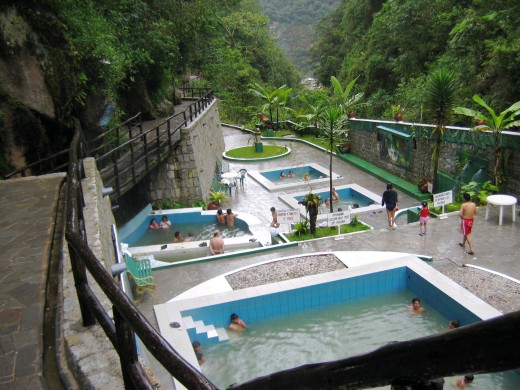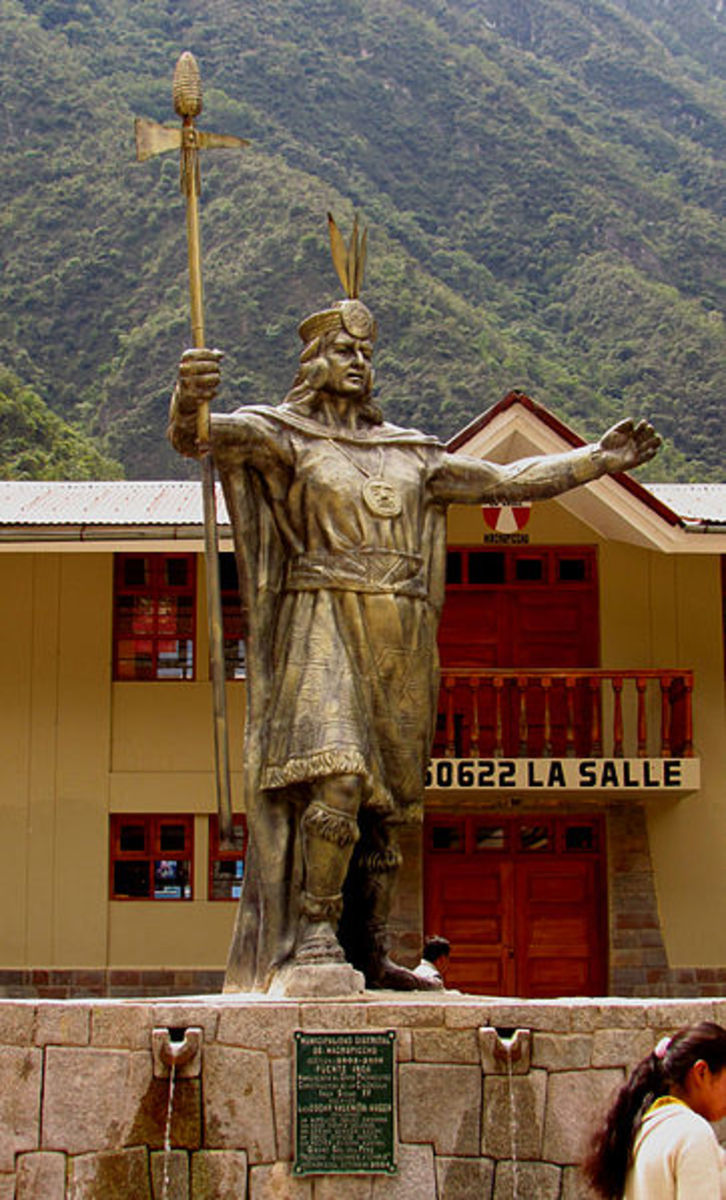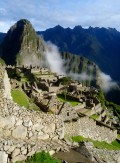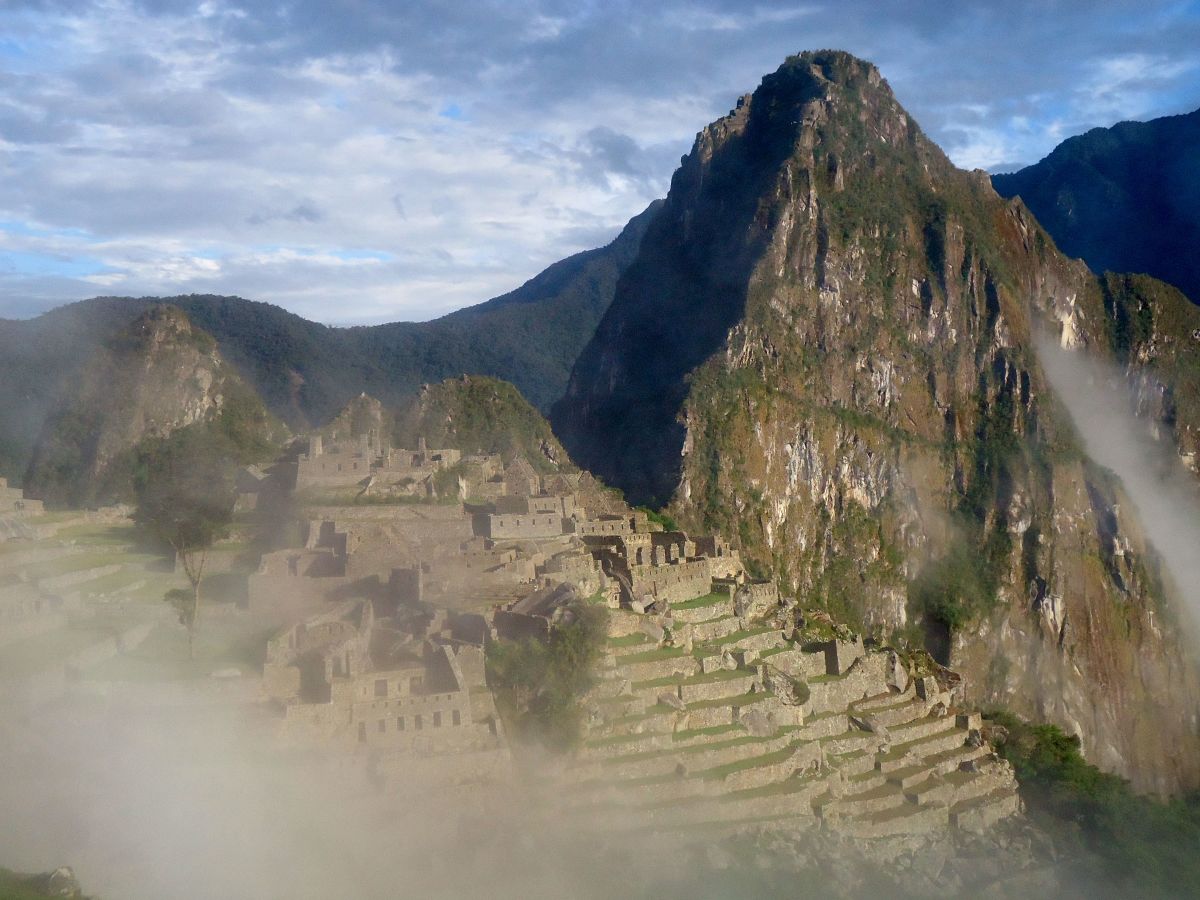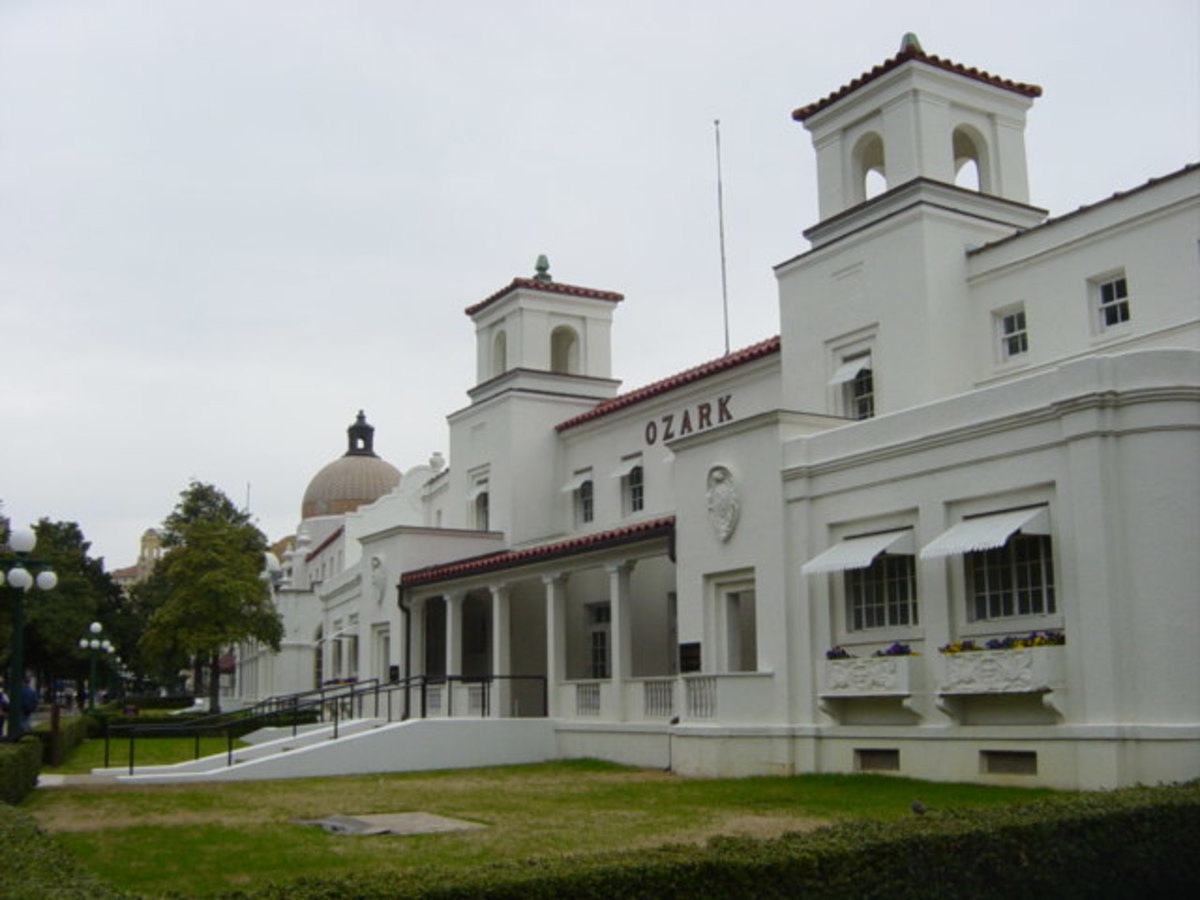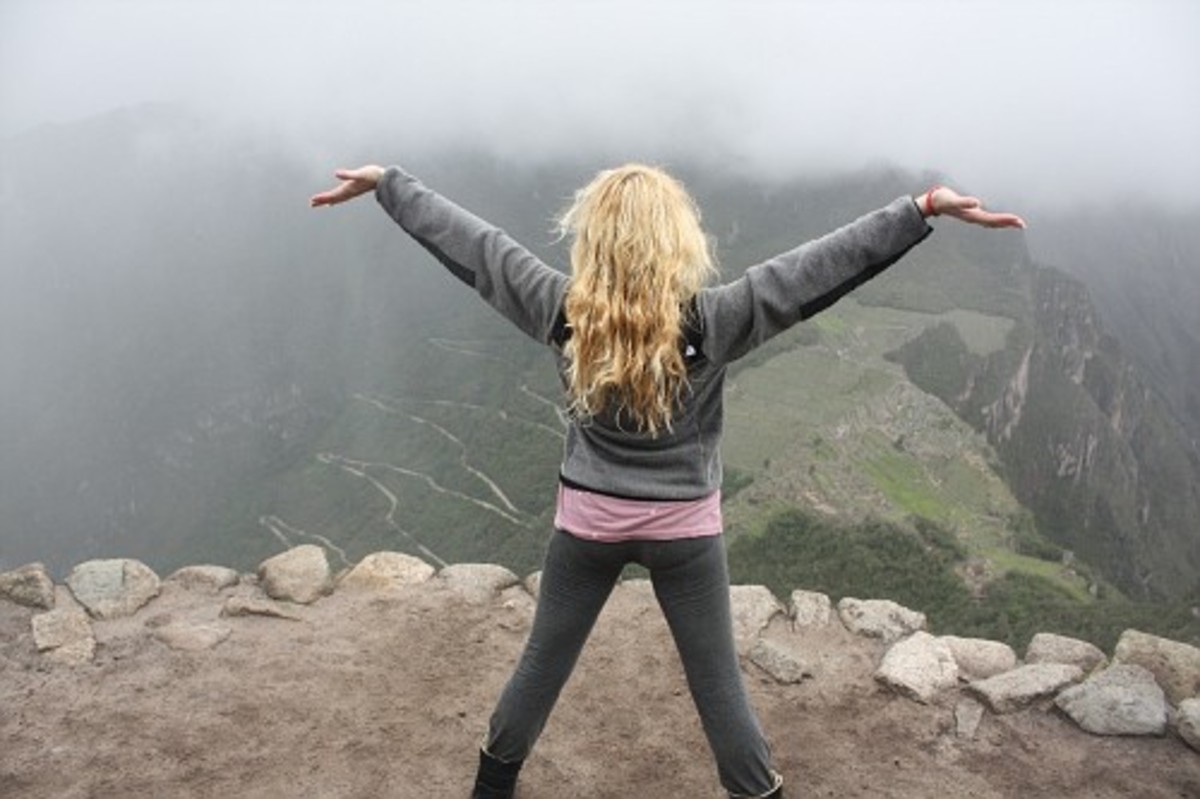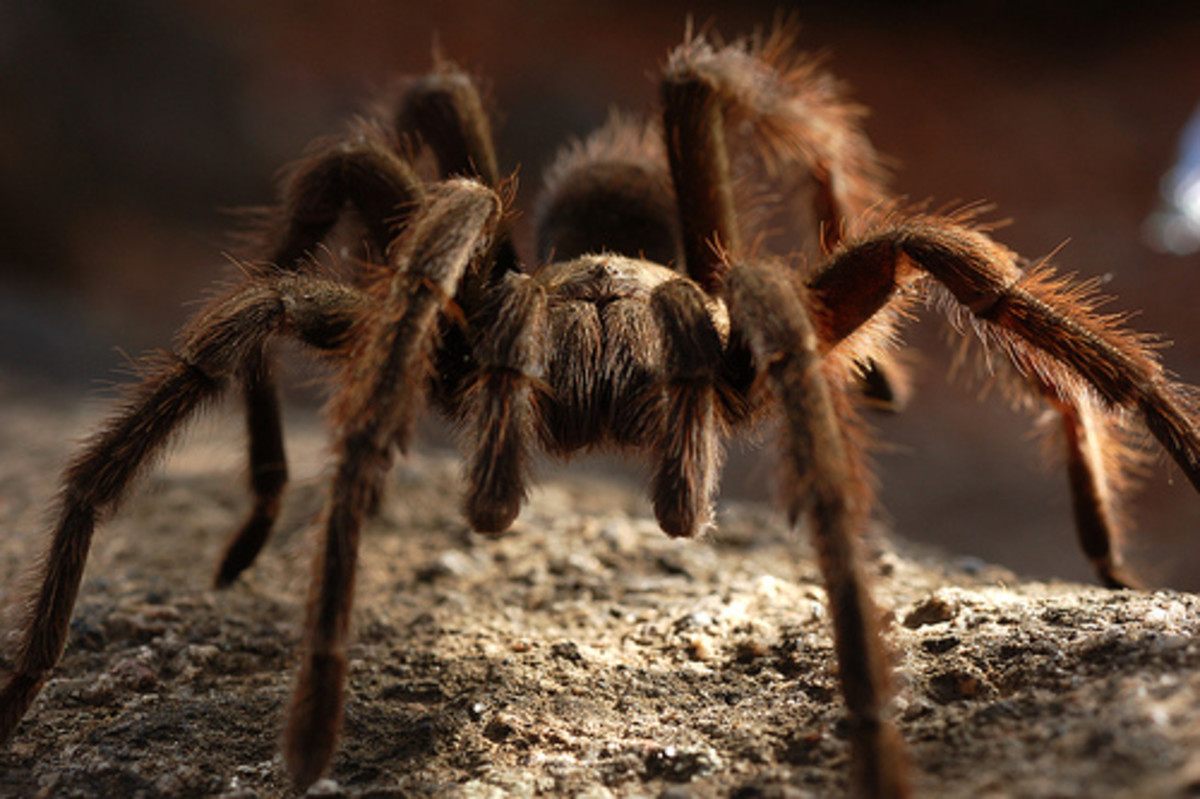Inca Fever: Machu Picchu & Aguas Calientes!
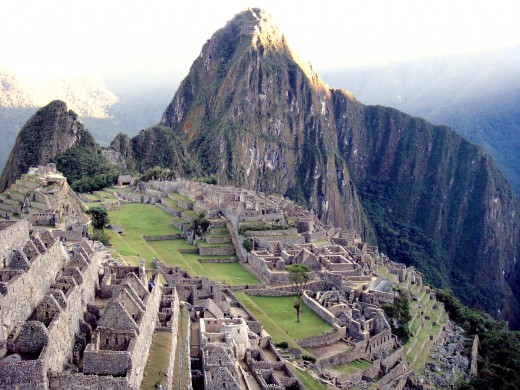
Machu Picchu Spectacular
Visiting Machu Picchu isn’t just visiting Machu Picchu! It’s combined with several additional days in which the Incan Empire, culture, and architecture is discovered. With all the many other sites to see throughout the Sacred Valley, Machu Picchu is the much-anticipated culmination of it all.
High above the Rio Urubamba, a river shown to be of great significance to the Incas since they built their cities above it, nestled on a peak in the Andes and sitting at just over 9,000 feet above sea level lies the great, awe inspiring wonder called Machu Picchu. This ancient city is actually about 3,000 feet lower than Cusco. However the numerous switchbacks and stone steps climbing up to the peak, and the view of the Rio Urubamba snaking its way through the valley below makes this site a breath-taking view not just because of the ancient civilization that lived there but also for its natural wonder.

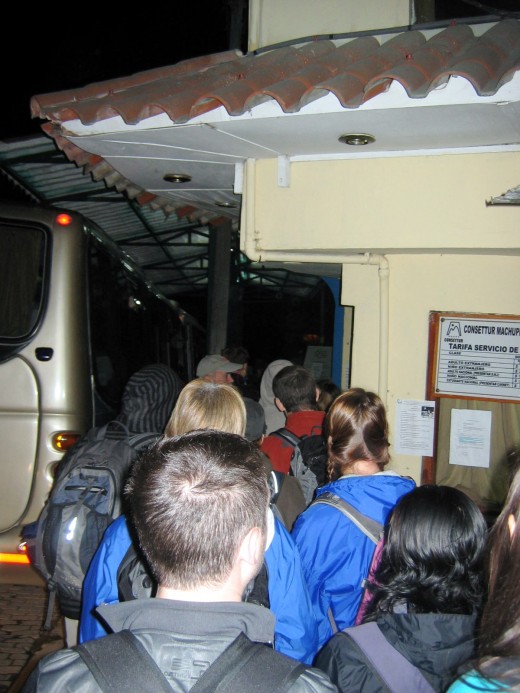
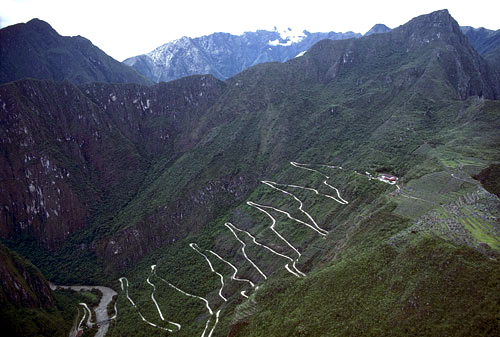
The Trip & Travel to the Top
We finally arrived in Aguas Calientes after dark. The train from Oolantaytambo to Aguas Calientes was nearly two hours. We were lucky to find the man who was waiting to meet us and walk us to our hotel. We checked in, dropped off our luggage and immediately went to find an open restaurant to eat as quickly as we could before catching about four hours of sleep. The next day came too fast as we woke at 4:30am before the sun rose. If you get up early enough you might be one of the 400 lucky people who get tickets to hike up Huayna Picchu, the peak that towers over Machu Picchu and houses many additional ruins. The view of the Machu Picchu and the entire surrounding area with all the mountain peaks and the valley below is superlative from the top of Huayna Picchu. The hike is ninety minutes each way and there are only two times each day the hike is offered and for only 200 people due to the nature of the trail.
We quickly packed our bags up and headed out to wait in the back of a long line that had formed. Tourists staying in hotels and hostels all around Aguas Calientes were waiting for the buses to drive us up the long, narrow switchback road. The ride was about forty minutes in length and somewhat frightening, especially at times when another bus heading down the mountain needed to get past us. Just on the edge of Aguas Calientes lays a rather large mountain peak that rises from the valley and kisses the heavens. The view of this was spectacular as the bus climbed its way up the gorge. We were in the heart of the jungle and in the early morning hours before the sun smiles on the world, the foliage has a sense of mysticism and wonder. Below the Rio Urubamba winds its way through the valley. I was not the only passenger that saw this ride as an opportunity to capture some pictures.
When we arrived at the base of the ancient Incan city that has sparked wonder in the heart of over a million tourists each year, we were connected to our tour guide and began our hike up the mountain, through the switchback stone steps and the to the entrance of the city. The hike isn’t long, thirty minutes, but it is somewhat intense since it is made up entirely of steep stone steps much like those found on the hike up to Yosemite Falls California. We arrived at the entrance before the sun rose and were then given the history of Machu Picchu and the opportunity to take pictures as the sun rose over the Andes. There are several tours offered and several groups starting their tours at sunrise. Many of the tours are in Spanish but there are enough guides that speak English too. Generally the guides will ask who in their group prefers English. Those people will be introduced to a new guide so they will get a full understanding of how the Incas lived and worked in Machu Picchu.
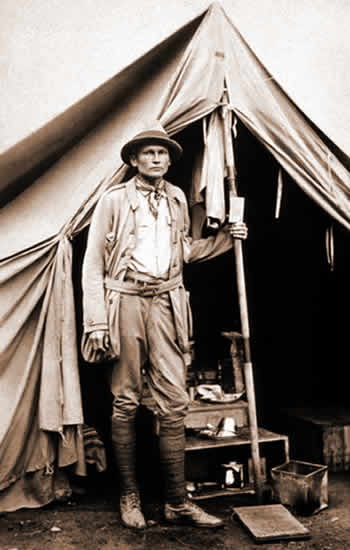
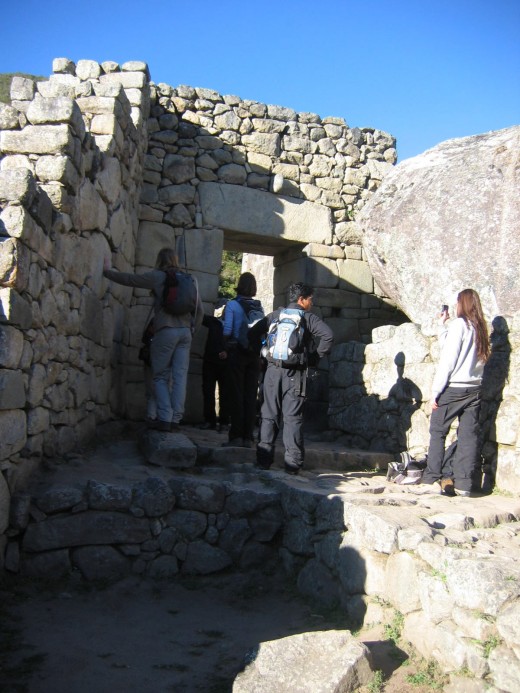
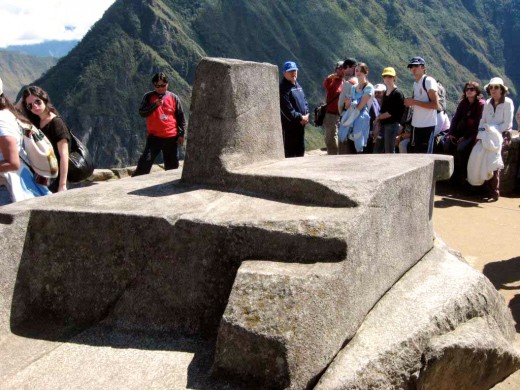
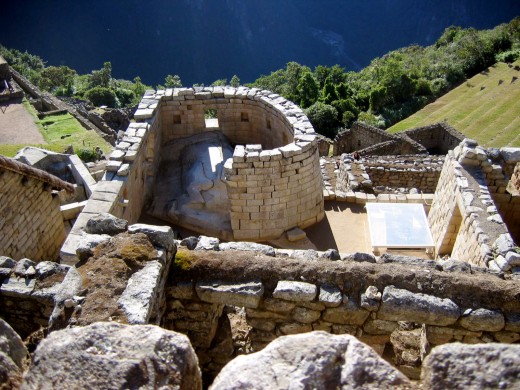
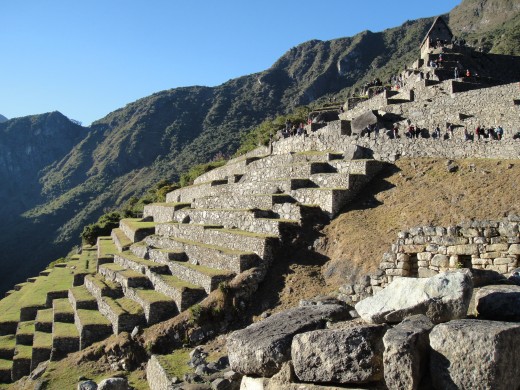
The History of a City
The Incas inhabited Machu Picchu in the 15th and 16th centuries. Ironically, Machu Picchu was not the most desirable city of the Incas, (Cusco was the Incan capital and other cities such as Oolantaytambo seemed to have greater importance). The city housed several of its own agricultural terraces, engineered its irrigation and water system through pipes built with the natural granite from the mountain to bring water up from the Rio Urubamba. Machu Picchu was the home of over 150 families; it had a rather large urban marketplace, several temples of worship, and an observatory. The observatory not only gave the Incas a sense of time, but also a reason to worship the sun god. The sun god was a vital part of Incan religious ceremony. The Incas also believed in a sort of three in one concept of spirituality. They believed the snake resembled the lower heavens where evil resided. The puma resembled the middle heavens where the Incas lived. The condor resembled the heavens above, which is the place the Incas aspired toward. Machu Picchu was abandoned in the mid-to-late 16th century when Spanish Conquistadors discovered the city. The Incas made their way to another city across the Andes we now know as the 'Lost City of the Incas'. To this day, nobody has discovered the 'Lost City of the Incas'. However, Hiram Bingham titled his first book about his journey to Peru and the discovery of Machu Picchu "The Lost City of the Incas".
In early 1911, a Historian from Hawaii and Lecturer at Yale University, Hiram Bingham, discovered Machu Picchu. Bingham traveled to Peru in search of the 'Lost City of the Incas', and instead he discovered Machu Picchu. After cleaning up the overgrown foliage, and turning the city into an archeological site, Machu Picchu was named a World Heritage Site in 1983. Since then, Machu Picchu opens its gate to more than a million tourists each year.
Walking through the City
Just after sunrise, we began our tour through the city, entering at the same gate the Incas entered and accepted visitors. The Incas built their buildings, gates, and homes in a trapezoidal shape where the walls are irregular and slanted inward. This was to add extra support in the case of an earthquake. The Incas used the resources they had for their architectural needs. For example, the granite used to build is all naturally found in the mountain. The sides of the mountain and the small peak that sits on top were originally made up of granite stone that is said to have been the result of volcanic origin. To break the stone and/or to expand it, the Incas used wet wood that was placed into the stone. When the wood dried it expanded and therefore the stone also expanded. This was the process the Incas used to build many of their structures. Moving on, we saw the observatory where the sundial is located, we walked through the house where the prince lived, and we passed the Temple of the Sun, which only has two windows that allow the sun to shine its light. The first window faces the east and in the winter when the sun rises in the east, the light comes through that window. The second window faces the south so that in the summer months when the sun rises in the southeast, the light shines through it. We also passed through the urban center and the market place. Finally, we walked along the agricultural terraces where the Incas cultivated corn and potato crops.
Rest & Relaxation: The Hot Springs
After spending the morning at Machu Picchu, we decided to descend back down to Aguas Calientes for some lunch and hot springs fun! Aguas Calientes translates in English to ‘hot waters.’ It is called this because at the top of the city and about a 10 minute walk from downtown lays a natural hot springs. The water comes in from the Rio Urubamba and is a wonderful place to get some good rest and relaxation after such an early morning and a day of trekking around Machu Picchu. There are a total of seven pools, each a different temperature including one that is much colder than the average swimming pool in California. The bottom of the pools is filled with granite stone pebbles much like gravel. There are warm showers available next to some of the pools, bathrooms, changing rooms, and a full bar service where the servers will bring the drinks to you so you can sip them next to the pool. You can also rent towels, swimsuits, and even flip-flops from the market just below the hot springs. I found the hot springs especially nice as a way to spend the rest of the afternoon and get ready for a long four-hour train ride back to Cusco.
